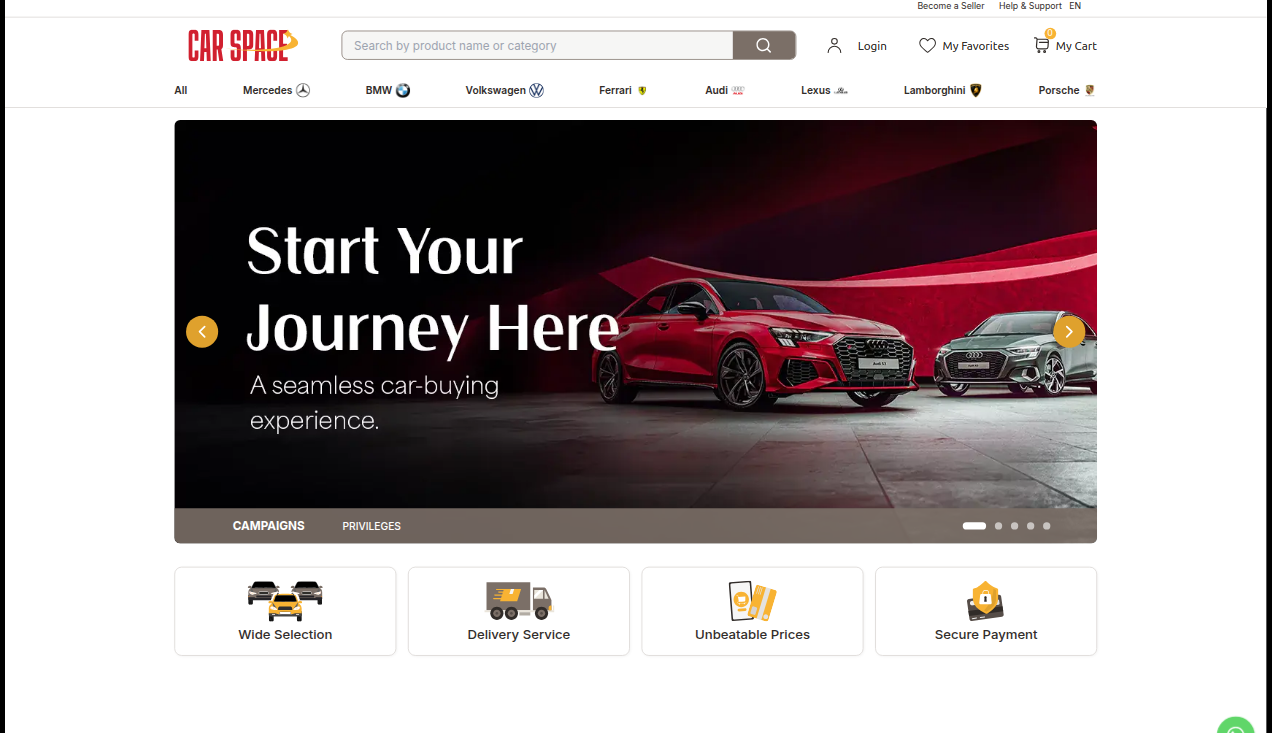Architecting and deploying scalable applications for an e-commerce car marketplace

The e-commerce car marketplace is transforming how vehicles are bought and sold online, combining user-friendly interfaces with robust backend systems. Deploying such a platform requires a scalable architecture to handle high traffic, secure transactions, and real-time inventory updates. In this post, we explore the development and deployment of a car marketplace using React, Next.js, PHP Laravel, AWS services, Nginx, and Redis.
“A well-architected e-commerce platform ensures seamless user experiences and reliable performance under heavy loads.”
Key components include React and Next.js for a dynamic frontend, Laravel for a robust backend, Nginx as a reverse proxy, and Redis for caching. AWS services provide the scalable infrastructure needed for reliability and growth.
The E-commerce Car Platform
The platform enables users to browse, filter, and purchase vehicles, with real-time inventory updates and secure payment processing. React and Next.js deliver a fast, SEO-friendly frontend, while Laravel handles business logic, authentication, and API endpoints.
Key Architecture Features
- React & Next.js: A responsive, server-side rendered frontend for optimal user experience and SEO.
- PHP Laravel: A secure and scalable backend framework for managing APIs and business logic.
- Nginx: A high-performance reverse proxy for efficient request routing.
- Redis: In-memory caching for fast data retrieval and session management.
- AWS Services: EC2, RDS, and Elastic Beanstalk for scalable infrastructure and database management.
Data and System Design
The platform relies on a well-structured database schema to manage vehicle listings, user data, and transactions. Laravel’s Eloquent ORM simplifies database interactions, while Redis caches frequently accessed data like vehicle listings to reduce latency.
“From database optimization to API design, every component was crafted for scalability and performance.”
The frontend, built with React and Next.js, provides dynamic filtering and search capabilities, with server-side rendering ensuring fast load times. APIs developed in Laravel handle secure data exchange between the frontend and backend.
Deployment Process
Manual Deployment
1. Setting Up AWS EC2: Configured EC2 instances with PHP, Node.js, and necessary dependencies for Laravel and Next.js.
2. Configuring Laravel Environment: Set up a virtual host for Laravel, ensuring secure database connections with AWS RDS.
3. Deploying Next.js: Built and deployed the Next.js app, configured for server-side rendering on an EC2 instance.
4. Nginx Configuration: Set up Nginx to route requests to Laravel APIs and the Next.js frontend, optimizing load balancing.
5. Redis Integration: Configured Redis for caching and session management to enhance performance.
6. Testing: Conducted end-to-end tests to verify functionality, including vehicle searches, user authentication, and payment flows.
Automated Deployment
Using AWS Elastic Beanstalk, the deployment process was automated, streamlining environment setup, scaling, and updates. CloudFormation templates further simplified infrastructure management, ensuring consistency across deployments.
Platform Optimization and Validation
Handling Traffic
The platform efficiently handles high traffic with Nginx load balancing and Redis caching. Real-time validation ensures accurate vehicle data and secure transactions.
Performance Optimization
- Redis caching reduced database queries for vehicle listings and user sessions.
- Next.js server-side rendering improved page load times and SEO.
- Elastic Beanstalk auto-scaling ensured the platform adapts to traffic spikes.
“Rigorous testing and optimization ensured the platform delivers a seamless experience for users worldwide.”
The Final Result
The deployed e-commerce car marketplace is accessible via AWS, offering a seamless experience for browsing and purchasing vehicles. The combination of React, Next.js, Laravel, Nginx, Redis, and AWS services creates a scalable, high-performance platform ready for growth.
Do you want to read more?
Here are some related articles you might like to read next: